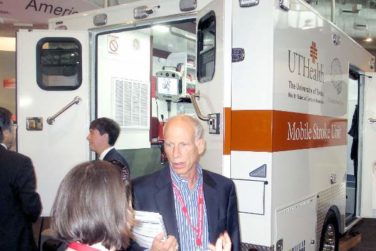I grew up in a diversity-free zone. The bubble surrounding Pleasantville, New York, in the 1950s and 1960s didn’t include people of color. We were all middle-class, some upper, some lower, some blue collar, some white collar – but, all of us comfortably in the middle. The children with disabilities must have been hidden in their homes or housed in institutions. They certainly weren’t our classmates. We were spread across the broad Judeo-Christian spectrum. Who knew there were other religions?
Of course, when I left for college I entered another even less inclusive bubble that didn’t admit women.
But diversity happens, and my grandchildren here in Maine have classmates of color (of course, not as many as in other less remote parts of the country). They think nothing of sharing their classrooms with children with disabilities. They don’t think it is weird that some of their classmates have two mommies. They have close friends whose uncles are openly gay. Although the economic spectrum here in Brunswick is only slightly broader than where I grew up, my grandchildren can travel just a few miles to see what poverty looks like.
For many years, the process that brought about this dramatic change was a fortuitous conglomeration of brush wars fought by courageous individuals and minority groups. However, in the last decade or two, the struggle for inclusion has broadened under the banner of diversity, a term once primarily used to describe evolving ecologic populations. In light of this expanding definition, it is not surprising that the American Academy of Pediatrics has begun to consider its role in promoting diversity. As reported in AAP News (Anne Hegland, March 2018) the American Academy of Pediatrics board of directors recently discussed a plan for implementing at “all levels of the Academy” the suggestions of its Task Force on Diversity and Inclusion.
I am confident that most of the changes that come in the wake of the academy’s initiative will be positive. However, this is a time in the life of this country when one must accept that “diversity,” “inclusion,” and their close cousin “multiculturalism” are not universally viewed as goals worthy of pursuit. The words have taken on a buzz that at times I find annoying, and some folks may feel they have heard more than enough about diversity and multiculturalism. Even though I think the terms have been overused, I don’t share their view because I believe we still have a long way to go before we are truly inclusive.
The academy is in the enviable positive of having a membership that agrees in general terms where its priorities should be – the health and welfare of children. It can afford to invest some of its energies in being more inclusive. However, the United States currently is struggling to rediscover a set of priorities that its citizens can agree on. We have politicians who would rather win a battle over their adversaries than address the obvious needs of the country. And, we have journalists who prefer to feast on these battles rather than search for evidence of cooperation. This is not a time to sharpen our focus on how different we are from one another. It is time to raise another flag along side the “diversity” banner. It should read “commonality,” and remind us that while we are celebrating our differences, we must work harder to uncover the core values that we share.
Dr. Wilkoff practiced primary care pediatrics in Brunswick, Maine for nearly 40 years. He has authored several books on behavioral pediatrics, including “How to Say No to Your Toddler.” Email him at pdnews@frontlinemedcom.com .




